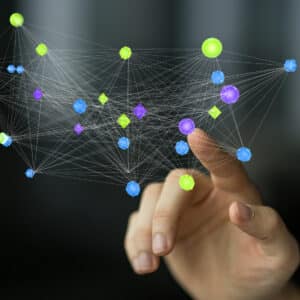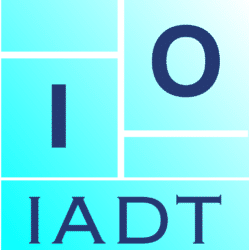
Distributed ledger technologies (DLT), of which blockchain is the most prominent, are the technological foundation of Web3 business.
The most interesting blockchain elements are smart contracts, which also function as tokens.
On behalf of its clients, IADT designs smart contracts and tokens on blockchains.
IADT makes the following contribution to the future Web3 business:
-
- Authentication and documentation
- Smart contracts and creation of tokens
Authentication and Documentation
Distributed ledgers represent the infrastructure where documents can be stored in a forgery-proof manner and delivered to business partners.
Documents of all kinds can be set up on blockchains as information tokens.
IADT designs Pure Information Tokens for confidential and forgery-proof data and documents. Applications for Pure Information Tokens can be found in logistics, banking, healthcare, engineering and many other industries with high requirements for tamper-proofing and confidentiality.
In addition, the IADT designs Proof Information Tokens, where documents also contain a verification stamp. Classic applications can be found in public registers, sovereign issuing offices and notarial certifications.
Processing on blockchains is advantageous if documentation and notarizations are to be more cost-efficient, faster, simpler and globally cross-border.
Thanks to DLT, IADT tokens guarantee maximum confidentiality and protection against manipulation.
Smart Contracts and Tokenization
Designing smart contracts on distributed ledgers means creating software that maps and executes certain predefined functionalities. Smart contracts are the core elements of decentralized applications (dApps) and services on a blockchain.
Smart contracts can serve as an object for trade and business: Tokens.
Tokens can merely be a description of what they are or represent. In addition, tokens can be supplemented by rights of disposal of all kinds. This makes it possible to create highly attractive digital objects of value. In many cases, these are treated like securities.
Tokens can themselves be a value (e.g. a cryptocurrency) or a digital object (e.g. a software program) on the blockchain.
Value tokens and object tokens are intrinsic tokens, i.e. purely digital, existing only on-chain.
Tokens can also represent a value (e.g. a Krugerrand) or an object (e.g. a building).
We call these tokens Value Twin Tokens or Object Twin Tokens. Twin tokens are also digital objects. But by definition they require a value or an object that they represent, that really exists, carefully stored and securely guarded.
Twin tokens are extrinsic tokens: the value or object they represent exists off-chain. Since such tokens are backed by real assets, we understand them to be serious, legitimate business objects.
IADT. We sharpen your blades for the digital age.

